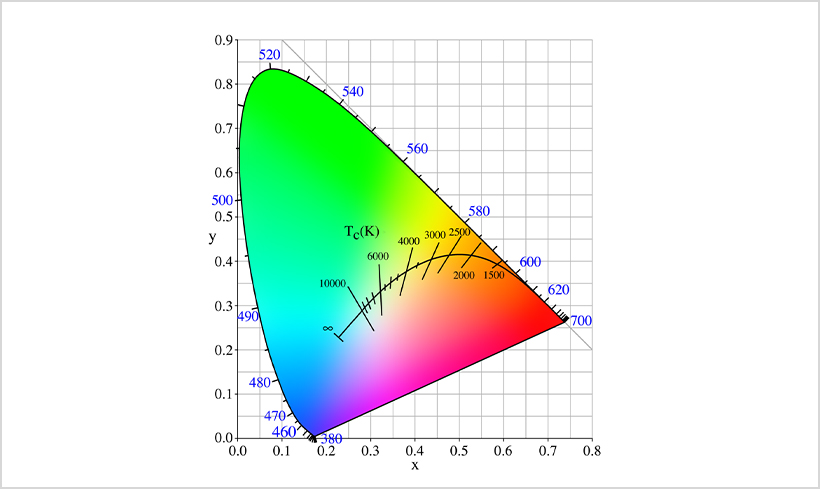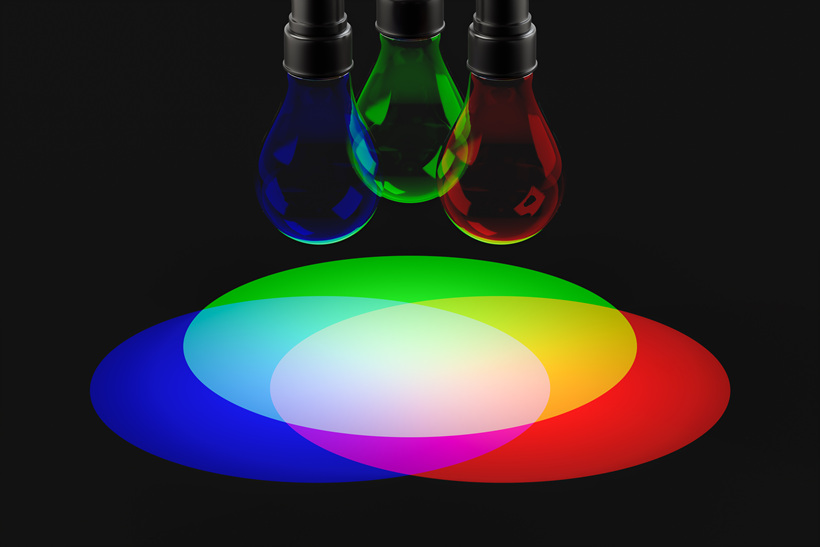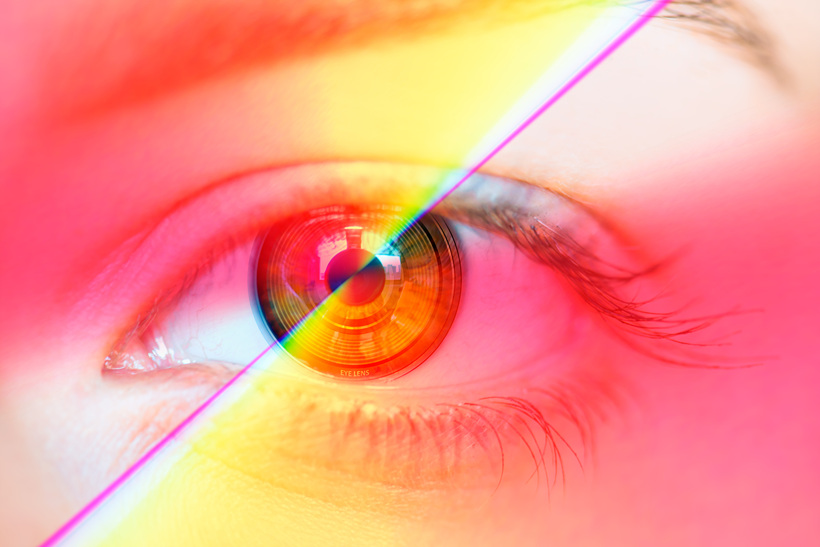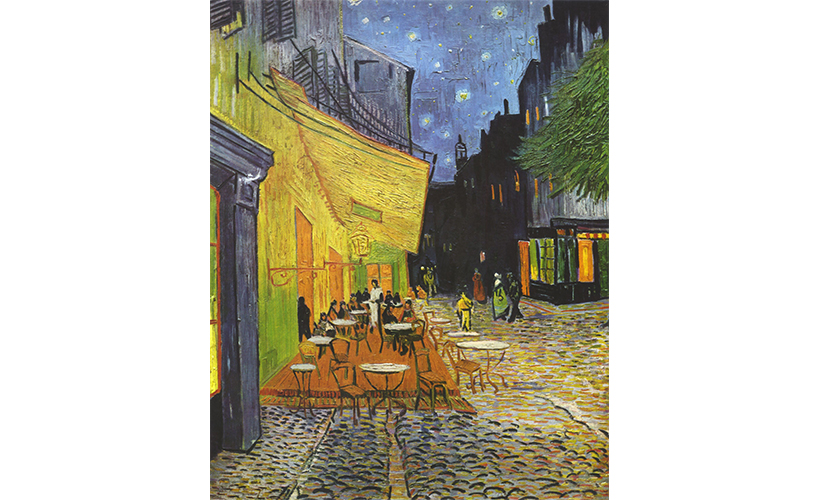
A vast universe of the human world arose from a single point about 13.8 billion years ago. The Big Bang Theory explains that a singularity was created at a point where a tremendous amount of energy was compressed, which suddenly exploded to form a continuously expanding universe. There are still many unanswered questions about how a small, volumeless dot radiated to create a universe of this size over 10 billion years. Regarding this mystery, the Genesis of the Old Testament refers to the beginning of all things, and the expression ‘In the beginning there was light,’ he said, was found.
In fact, it is known that the primordial universe went through a plasma state immediately after the Big Bang and gradually glowed. Like the moment just before a bomb exploded, it could not emit light when elementary particles such as atomic nuclei and electrons were entangled. Just as shock energy is applied to gunpowder to make embers and cause an explosion, the scattered electrons and nuclei combine to form a neutral atomic structure, and photons can eventually emit light. It is said that this first light appeared in the decoupling era approximately 380,000 years after the hot moment of the Big Bang. In the long history of the universe, it belongs to the first moment. The original light remains as Cosmic Background Radiation and still fills the expanding universe. The world began with light.
All Light in the World Blooms in Darkness

The first light from the Big Bang was generated at a temperature of about 3000 K, but as a result of the expansion over many years, the currently observed temperature of the cosmic background radiation has reached the level of 2.7 K. In terms of degrees Celsius, it is a cryogenic temperature of minus 270 degrees Celsius. If you change the temperature of 3000K to the color temperature, it shows a slightly bright yellowish-orange color. Most of the LED lamps in the office are daylight color at around 5000K, but this temperature indicates a slightly whiter light than the color of a yellow light bulb. Similar to bright ivory, this color is actually the average color found in the center of the galaxy.

This ivory light emanating from a cluster of stars is therefore called “Cosmic Latte”. It is a metaphor for the same color as a cafe latte. The light of the beginning, which started as a pale cafe latte-like color, maybe considered romantic, but it cooled down as it diffused into the vast space for more than 10 billion years and eventually changed to a dark light -270 degrees below zero. The universe is a dark paradise. The reverse idea of finding the primal light in the cold darkness that instantly freezes all beings is amazing.
Perfect darkness absorbs all light and does not reflect it. If there is absolute light brighter than the sun, there is also absolute darkness. The cosmic background radiation left by the primordial light is measured uniformly in all directions in the sky. A black body is an entity that completely absorbs light and energy in all wavelength bands but emits the corresponding light depending on the temperature. The universe is a world of endless darkness.
Along with the black body, black holes, black matter, and black energy also appear. All but a few galaxies and stars shine are all dark worlds. These dark energies became the driving force that expanded the universe and made it come alive. Except for visible light, most electromagnetic waves are dark. Even the inside of visible light from the sun contains numerous dark elements as noise. Darkness has often come to symbolize negative connotations due to dark images, but it has also played a large role as a background to illuminate light and color.

Caravaggio, an Italian painter who opened the Baroque era, and Rembrandt, a Dutch painter, remained in the history of art as completers of the chiaroscuro, dramatic contrast between darkness and light. They actively used darkness as a way of expressing color to focus on the subject. All shining beings bloom in darkness.
A World Created by Mixing Light and Color

To make black, you need paint that absorbs all light. The colors on the canvas are a world of subtractive mixing. Since it is impossible to express all the colors in the world with pure colors, there is no choice but to mix paints to reproduce the exact object. Paints are a mixture of pigments and adhesives, so the more you mix them, the murkier and darker they become. Since high-purity pigments were more expensive than gold, it was a big challenge for painters to express high-saturation colors with fewer pigments.
To express the Virgin Mary, noble blue was required, and to draw kings and monarchs, pigments that gave off a brilliant golden color were required. However, when the overall picture is dark, the amount of high-purity pigment required to paint the bright areas is reduced. Painters who wanted to save on pigment costs were usually dark or monotone. Nevertheless, the depth of the painting was further emphasized. This is because the stages from the darkest black to the shiny white are richer. As the levels of darkness and light increase, the objects in between are revealed more abundantly. Advanced HDR (High Dynamic Range) technology was already hidden in the painters' paintings.

On the other hand, light is a world of additive mixing. Small lights come together to make a brighter light. Even galaxies in the universe are made up of hundreds of millions of stars gathering together to form clusters of light. Because the light is emitted directly, it is convenient to produce a higher-purity color. It is difficult to saturate bright fluorescent colors in a printed picture, but it is easy to implement with light. On the other hand, it is difficult to realize a subtly dark world of darkness like Rembrandt's paintings. Compared to the color of the paint fixed on the picture, the color realized by light is more interrelated.
Electronic displays such as TVs and computer screens express colors by controlling the light of primary colors. It is difficult to achieve a completely black color because it is necessary to create darkness by collecting light. In particular, the liquid crystal screen (LCD), which emits light using a backlight that illuminates the entire screen, is not easy to express dark black. On the other hand, in the case of OLED, color is realized in such a way that each pixel emits light on its own.
To express bright light, a darker light is needed, like a shadow. This is the reason why a small street lamp in a pitch-black place feels brighter than a bright street. It is difficult to easily determine with the naked eye how bright a single light is and what color it is. This is because our eyes respond to various conditions such as changes in sunlight and amount of light, as well as ambient lighting and scattering effects, and diffuse reflection of objects. Light is a living color.
Visible Light Visible Only to the Human Eye

The human eye, or more precisely the optic nerve and cognitive processes, is a complex system that has undergone a long evolutionary process. Among the wavelengths of light from the sun, only visible light has evolved to be visually recognized. Other mammals and insects see the world like red-green color blindness, in which red is the weakest of the three primary colors of light. It is a color system like a faded color photograph. Instead, they see ultraviolet light that humans cannot see. Therefore, it is said that when bees look for flowers, they look for yellow stamens rather than red petals. Red petals or green leaves, to them, it's just an olive-green color.
Birds, on the other hand, can see both the three primary colors of light and ultraviolet light so that they can find small prey. Some aquatic organisms, such as shrimp, have as many as 12 primary color-sensitive cells, while others, such as jellyfish, have polarized cells that see the trajectory of movement. There must be an evolutionary reason why only human-like primates have a better perception of red than other mammals. The desire to eat red berries and meat must have worked, and it must have required judgment to read the signals that blood is dangerous. Color perception is a tool for survival.
It is not as different as other animals, but the color of the world that humans see is different. Just as people are distinguished by differences in appearance, the cells inside the eye also show subtle differences. In particular, since the gene involved in recognizing red is located on the X-chromosome, the problem of color blindness, that is, color vision abnormality occurs up to 100 times more in men than in women. In the most common case of red-green color blindness or color blindness, the perception of red to green in the color spectrum is different, and all appear to be olive-like tones.

However, if you think you will be unhappy because you cannot properly recognize the colorful colors and lights of the world, you are mistaken. They live well without discomfort in their daily life through their own color system. Differences in perception are only rarely revealed when discussing subtle differences in specific colors. Even famous artists and film directors are sometimes colorblind. Van Gogh, who left splendid Impressionist paintings, is assumed to have had a problem with color vision. Director Christopher Nolan, who made the film Interstellar, scientifically clear visualization of the universe where light began, is also said to be colorblind. All of them left behind great works of visual art.
What would the ideal display look like for both normal and color-blind people? The richest gradation should be prioritized so that the brightest white light to the black that is close to the black body can be sufficiently expressed. In addition, it is necessary to adjust the light and color itself by adapting to the surrounding environment so that the user can recognize it as a certain color system. Already, many electronics manufacturers are showing off adaptive screen adjustment technology.
Among them, Samsung Display has already introduced color correction technology for people with color weakness based on OLED display technology since 2014. It is a correction technique that quantifies the level of color weakness and emphasizes the appropriate color step by step. This is because OLED, unlike LCD, can precisely control light on a pixel-by-pixel basis. This technology is also applied to smartphone products, helping color-impaired people to feel the original color as much as possible. It is an expression of a warm heart that considers the weak as much as the brain that creates new technologies. Even with the same screen in front of us, we see different colors. The light created by technology remains the color of our hearts.


